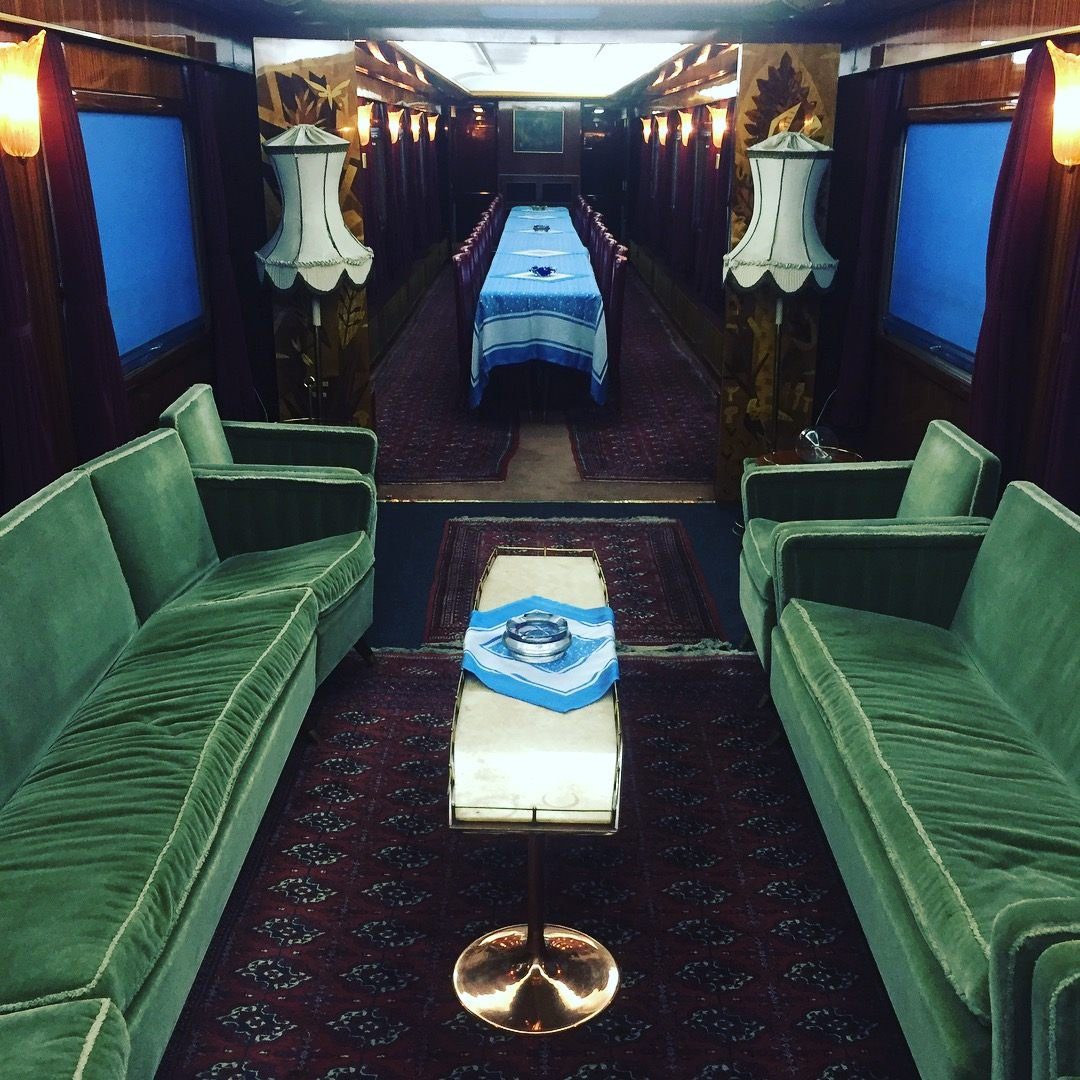The legendary train was designed in 1959 by order not for anyone, but for Josip Broz Tito.
Portraits of the marshal in his no less legendary white uniform hang even now in some trendy bars in Belgrade. But the train, although a tourist attraction, sinks into oblivion and nostalgia at the same time…
Tito often used it for both diplomatic and personal travel, specifically transporting his family and entourage to his summer retreat, the Brijuni Islands in Croatia. The train is said to have traveled over 600,000 kilometers.
The Art Deco interior features the President’s suite lounge, ceremonial conference lounge, restaurant car, Zodiac-themed bar, central kitchen, guest suite lounge, sleeping cars and all manner of nostalgic mid-century technology. Even a 4 car garage. In the wagon-garage there was enough space and facilities for the maintenance of the cars. The overall effect of the train is one of understated power, which is no surprise given some of the passengers.
Famous people who have traveled on the legendary train include Queen Elizabeth II, Yasser Arafat, French presidents Francois Mitterrand and Charles de Gaulle, and even film stars Sophia Loren and Elizabeth Taylor, who vacationed with Tito in Croatia. The train also carried the marshal during his last journey, when in 1980 it transported his coffin to Belgrade. Tito’s funeral was the largest state funeral in history at the time, attended by 128 delegations from all Cold War countries, several kings, 31 presidents, six princes, 22 prime ministers. Also present are “fellow dictators” Saddam Hussein and Kim Il Sung, as well as the late Prince Philip and Margaret Thatcher.
In history textbooks, Tito is portrayed as both a hero and a dictator. Among his merits, all point to the termination of relations with Stalin in 1948, his commitment to the Non-Aligned Movement and the Third World, and the relative liberality of his regime. On the other side of the scale are the mass murders after the end of the Second World War and the concentration camp on the island of Goli Otok, where at first Tito’s loyal opponents of the USSR were sent, and then all kinds of political dissidents, writes DW in its commentary.
Tito is known for his, let’s call it peculiar, approach to diplomacy within the Soviet Union. When he got tired of Stalin sending him assassins, Tito openly wrote: “Stop sending people to kill me. We have already captured five of them, one of them with a bomb and one with a rifle. If you don’t stop sending assassins, I will send one to Moscow, and I won’t have to send a second.”
During the Cold War, Yugoslavia was the only communist country in Eastern Europe independent of the Soviet Union and enjoyed a standard of living close to what some analysts described as Western. A normal, average Yugoslav family has a good job, a decent salary, can afford a car, and a summer vacation on the Adriatic Sea. Tito maintained very good relations with Western countries and managed to keep Yugoslavia neutral throughout the Cold War period. Ruling a country that some historians have called a “communist Switzerland”, the dictator ensured peace reigned in the Balkans during his rule and ruled perhaps the only communist country where citizens could freely leave. But on the other hand, he was also a dictator who imprisoned dissidents in brutal prisons and labor camps.
But back to the dictator’s train… The well-preserved carriages are actually open to the public as a kind of unofficial private museum, except that they can be hired for special trips on the Belgrade-Bar railway – although due to the high costs this rarely happens.
But if the price is right, you can rent the whole train or one carriage (for travel or for filming) and as a bonus, even organize a dinner in the restaurant car using original recipes from Tito’s cookbook.
During the twelve-hour journey, a tour guide tells anecdotes from the president’s life, shows pictures of Tito, and the stories of the charismatic dictator are illustrated on the walls. The blue train takes tourists several times a year. The route passes through the picturesque Lake Skadar, the Morača and Tara canyons, the Mala Rijeka railway viaduct and the Zlatibor plateau.
Photo: atlasobscura.com












